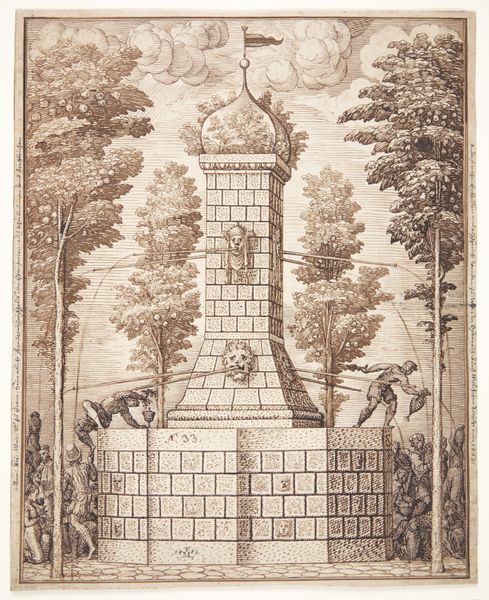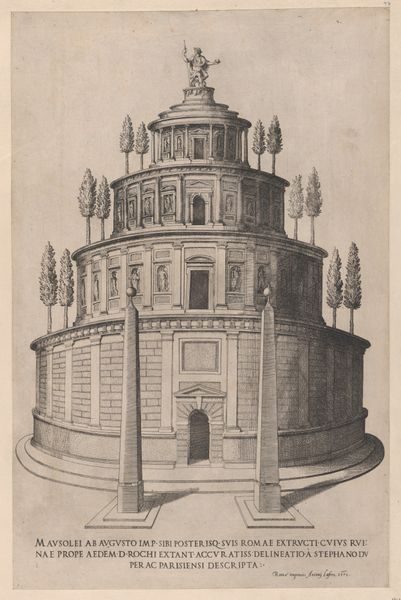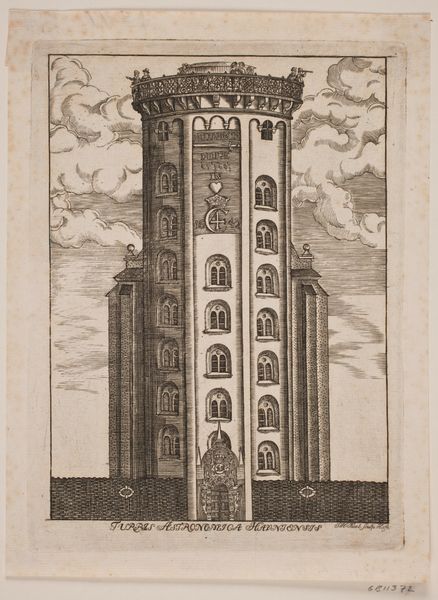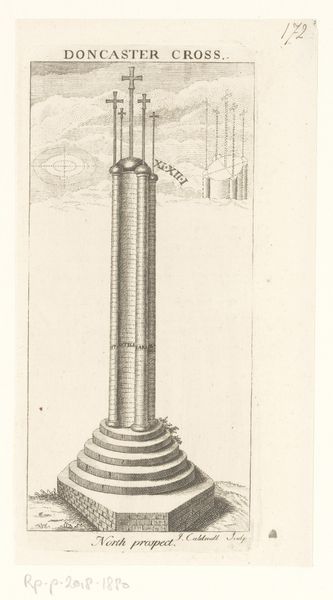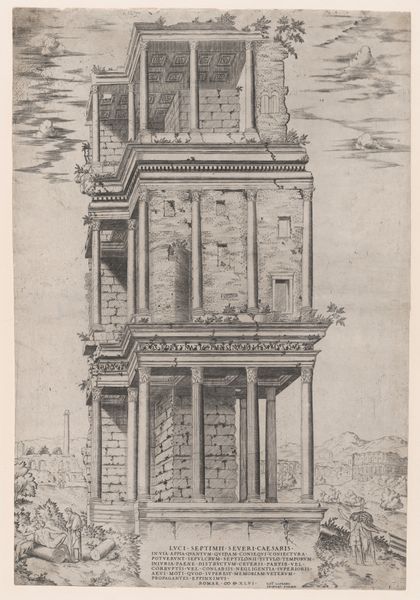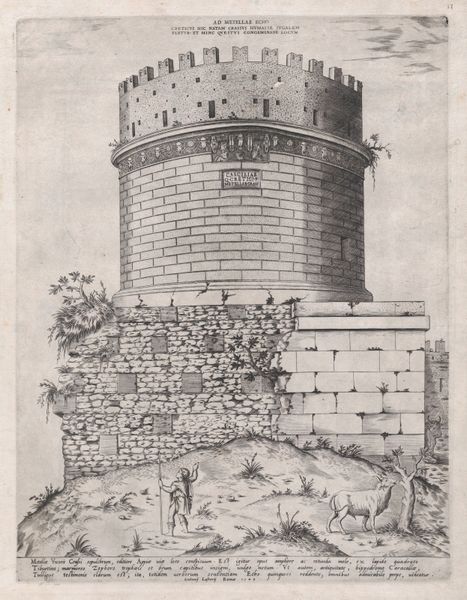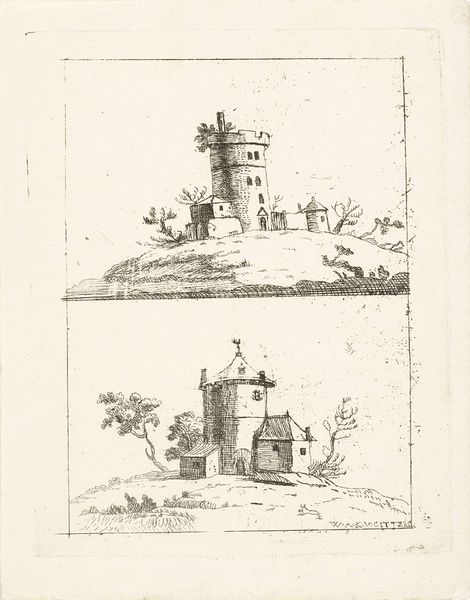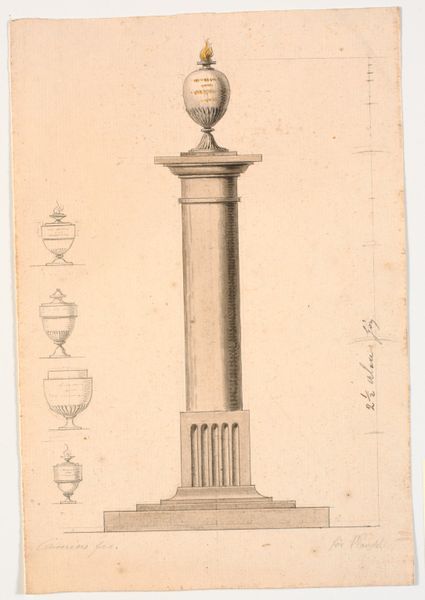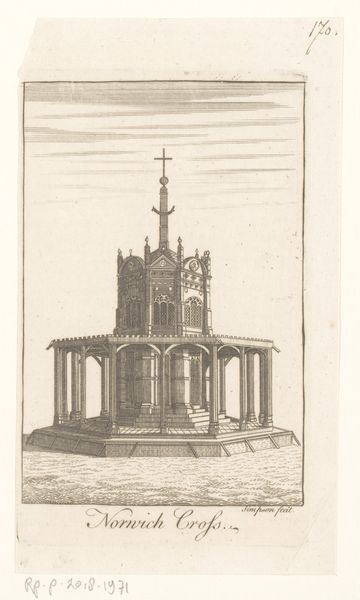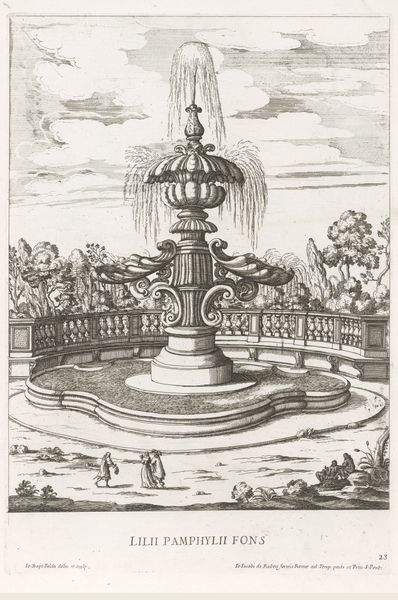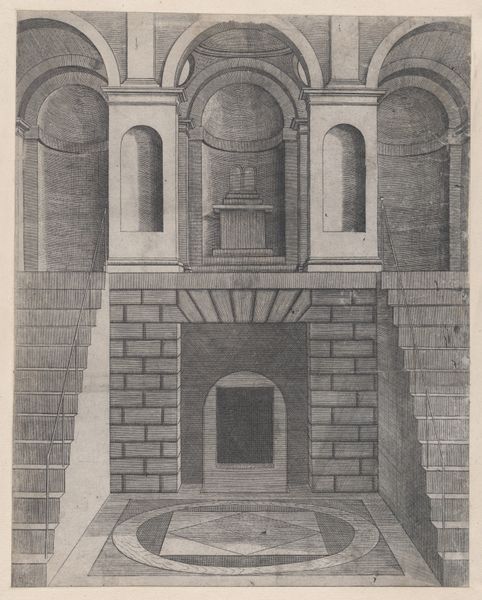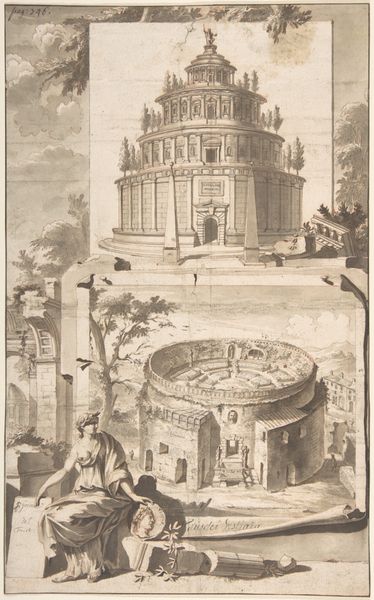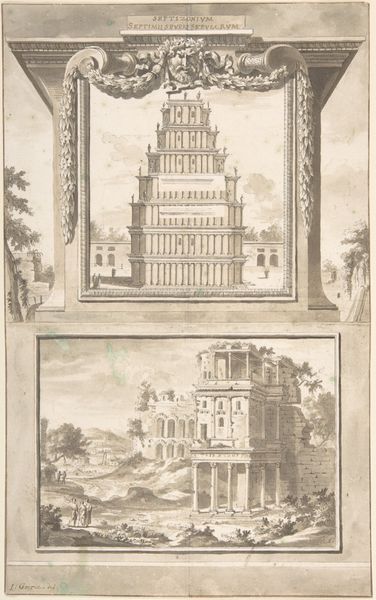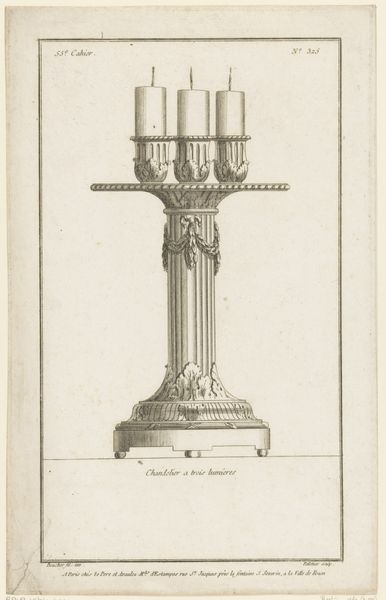
drawing, etching, architecture
#
drawing
#
etching
#
landscape
#
classical-realism
#
etching
#
figuration
#
11_renaissance
#
history-painting
#
architecture
Dimensions: 432 mm (height) x 316 mm (width) (bladmaal)
Curator: Look at this elaborate construction, the “Fountain with Caryatids” etched by Melchior Lorck in 1563. It resides here, in the collection of the SMK, Statens Museum for Kunst. Editor: My immediate reaction is of austere grandeur, but the cross-hatching of the etching gives it an ethereal lightness. There’s a real contrast there. Curator: Absolutely. Etching allows for a replication of detail that really shows off the implied expense and labor of constructing something like this. Think about the workshops required! Editor: Exactly! I am intrigued by the public role such a fountain played in the Renaissance. It was more than mere decoration; it was a statement of civic pride and maybe even power. The figures supporting the tower... what statement do they make? Curator: They’re caryatids, architectural supports in the form of female figures, drawing directly from classical precedent to convey power, stability, and perhaps even the bounty associated with the space. And look how the water is represented in almost mechanistic terms. Editor: Yes, water practically defying gravity... quite the spectacle for the time. You're right, the precise lines highlight engineering ingenuity just as much as artistic skill. Were such fountains actually built, or was this a fantastical rendering? Curator: That is part of what’s so captivating here! It may have been imagined to drum up funding, perhaps even to promote an ideal or some upcoming festivities. Editor: Fascinating. So, we’re viewing an artifact, which could itself be interpreted as propaganda of a certain kind. The artist may have hoped it would generate support. It tells its own kind of story. Curator: Indeed. An image speaking volumes about ambition, resources, and the role of the artist as not just creator but promoter of material investment in a public space. Editor: Looking at the figures adorning the base of the fountain really shows what materials Lorck and collaborators had at their disposal, even through just the lines of an etching. Thank you for clarifying its multifaceted layers, revealing social context that is essential. Curator: Thank you. I leave seeing its historical context anew by way of its very construction methods and use of material.
Comments
No comments
Be the first to comment and join the conversation on the ultimate creative platform.
